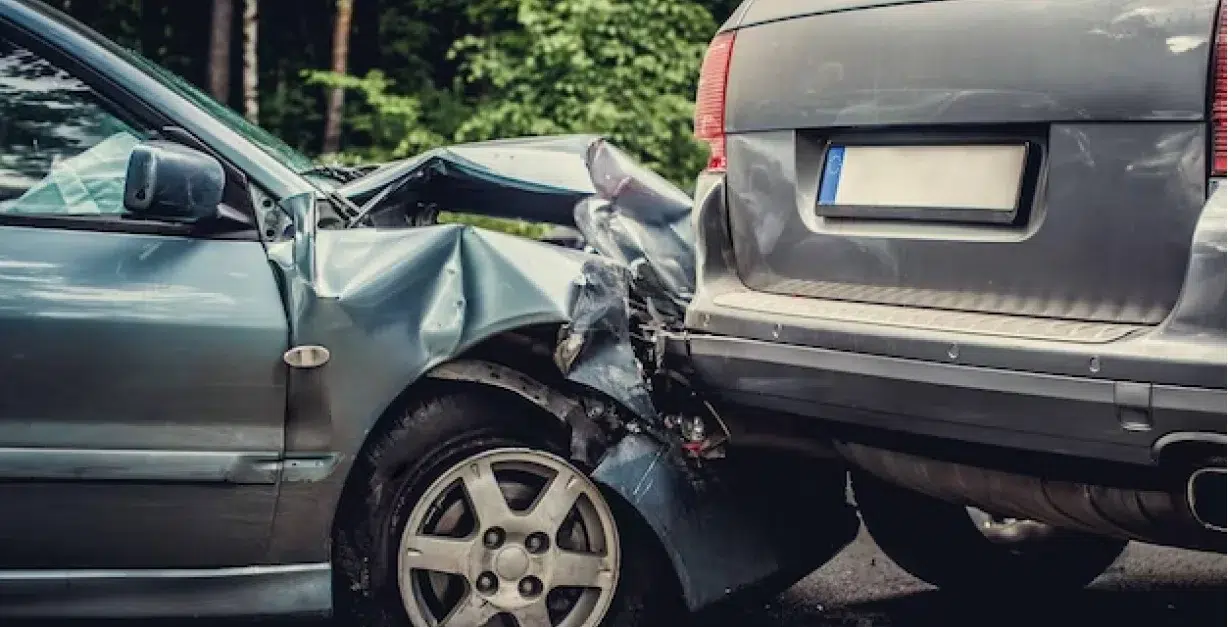Motor vehicle injuries are serious issues, and they can often be life-altering. If you’re dealing with car accident injuries, you need to get the help and support you need from a trusted Law Firm you can rely on.
You don’t have to face your Fort Worth area motor vehicle accident alone. At AMS Law, we understand that every case is unique, and having an experienced motor vehicle attorney by your side can make all the difference. Our dedicated team is here to support you and fight for your rights, ensuring you receive the representation you deserve.
We know that Fort Worth and its surrounding areas are not immune to the dangers of car accidents. Some roads in the region are known to be among the most dangerous in the state. If you’ve been injured on these treacherous roads, we are here to provide the legal guidance you need to navigate your case.
To start your journey towards justice, we offer a free consultation so you can talk over your motor vehicle accident with our knowledgeable attorneys. This allows us to assess the circumstances of your injury and provide you with personalized advice tailored to your situation.
Don’t let the challenges of your accident and injuries overwhelm you. Put your trust in AMS Law, our team of personal injury lawyers will stand up for you and ensure you receive the justice and settlement you deserve.
34
Years of combined experience
700+
Cases
90%+
Won cases

There are Several Kinds of Auto Accidents
AMS Law will handle your case with care and expertise, no matter the type of motor vehicle accident you are in. We’ll advocate for your best interests, striving to secure compensation for your injuries, damages, and losses. Be sure to seek the legal assistance you need to navigate the intricacies of your motor vehicle accident case.
Pedestrian Injury
A pedestrian injury lawyer focuses on personal injury cases for people struck by a vehicle or otherwise injured while walking. When it comes to pedestrian accidents, the stakes are high, and the intricacies of these cases require a deep understanding of the law.
When you’ve been harmed by someone else’s negligence, seeking justice for your injuries is easier with a North Texas attorney you can rely on for support and peace of mind. If you or a loved one has suffered harm while walking, don’t hesitate to reach out for a free consultation.
Motorcycle Accidents
Much like truck accidents, motorcycle accidents and the pain they can cause can be extremely serious due to the lack of protection a motorcycle provides in an accident.
Your job is to heal from your injuries and let your lawyer work with the insurance company, the driver of any other vehicles, and other parties.
After crashes, it’s often the insurers that pay. But Fort Worth attorneys that handle motor vehicle accidents also look into dangerous roads, who was at fault, the medical treatment their client needed, the accident scene, and more.
Drunk Driving Accidents
Driving under the influence (DUI) in Texas can have severe legal repercussions. From license suspension to substantial fines and even imprisonment, the consequences of a DUI conviction can be life-altering.
If you are involved in a drunk driving collision, it is crucial not to navigate the complex legal system alone. DUI collisions can be intricate, especially when property damage, injuries, and fatalities are involved.
Seeking professional legal services is paramount in protecting your rights and minimizing the impact a DUI conviction can have on your life. An attorney well-versed in DUI who can assist you in gathering vital evidence and constructing a robust defense strategy is your key to securing the most favorable outcome for your situation.
Uninsured Driver Accidents
Uninsured driver accidents can be some of the most serious in and around Fort Worth because you won’t have the other party’s insurance to help you cover the costs of medical attention. Even though the other person was at fault when you were hurt, you may have to make a claim with your own insurance.
Even motor vehicle crashes where everyone has proper insurance can still be stressful and require the services of a good attorney. If you’ve been injured in a Texas auto accident and are working with doctors to reduce pain and get treatment, you need an attorney to help you recover compensation.
18-Wheeler Truck Accidents
18-wheeler truck accidents are generally very serious and cause more damage than typical auto accidents because of the size and weight of the truck. If you’ve been in a Fort Worth crash with an 18-wheeler, you want to seek fair compensation for your injuries and losses. Injuries resulting from 18-wheeler truck accidents can often be catastrophic, leading to extensive medical bills and long-term rehabilitation. The sheer size and weight disparity between a commercial truck and a passenger vehicle can result in devastating consequences for the occupants of smaller vehicles involved and you need an experienced lawyer to ensure you are compensated fairly.
Motor Vehicle Injury Dallas/ Fort Worth
Don’t try to handle your accident alone, as it can be stressful and difficult. Car accident lawyers understand how to help. They can work with the insurance on your bills, get details you were unable to collect after the crash and help a jury understand your pain.
“Police should always be called to these accidents, where the life of patients in the vehicle could be on the line.”
They also work with Texas doctors who treat victims of collisions to better understand injuries, treatments, and the value of these things when it comes to reaching fair compensation.
Drunk driving collisions are often more serious than the fender benders that come from road construction and other issues. Police should always be called to these accidents, where the life of patients in the vehicle could be on the line.
With the seriousness of these kinds of car accidents, the insurance company will want to settle quickly and for as little as possible. While it might repair your vehicle, it doesn’t handle other expenses.
Auto accidents in the Fort Worth area should be handled with care regardless of their cause. If you’ve been in a wreck caused by another person, and you’ve had to seek medical treatment and repair or replace a damaged vehicle, you need an attorney on your side to help you recover financially.
“Police should always be called to these accidents, where the life of patients in the vehicle could be on the line.”

Have You Been a Victim of a Motor Vehicle Injury in the Dallas/Fort Worth Area?
If you’ve been in a car wreck in or around Fort Worth, your insurance company and the insurer for the other party will both be interested in the scene of the accident.
Whether the crash involved drunk drivers, someone texting, or just a lack of attention, you may be able to recover money from your injuries, damage to your vehicle, lost wages, and pain and suffering.
“While you may be able to settle with the insurer, the odds are high it won’t be for as much as an attorney could get for you.”
In most cases, the pain and the medical bills are the two biggest areas to consider when it comes to getting compensation for a wreck caused by someone else. Getting in touch with AMS Law is the first step toward recovering financial compensation.
You’ll also need to work with doctors who can help you heal and are familiar with the kinds of injuries to look for after crashes. You want the insurer for the other party to pay your claim, and you deserve compensation for that other party’s failure to control their vehicle correctly.
Don’t try to handle the aftermath of your accident alone. While you may be able to settle with the insurer, the odds are high it won’t be for as much as an attorney could get for you. It’s better not to sign or agree to anything before you talk to a lawyer about your accident.
“While you may be able to settle with the insurer, the odds are high it won’t be for as much as an attorney could get for you.”
There is Help Available for Car Accident Injuries
After a car crash, it can be hard to decide what action to take. The most important thing is to get to a Fort Worth doctor or hospital for an examination and treatment. Even if you’re not in pain, the damage from an auto accident can take time to appear.
“Rather than take the risk, only talk to the police about your vehicle and exchange information with the other driver at the scene.”
Your vehicle will also need to be repaired or replaced, and insurance companies will want to give you the minimum amount if you don’t have an attorney to negotiate after the crash. Don’t let the insurer push you away or keep you from receiving what’s fair.
Auto accidents can permanently alter lives.
If you’ve been in an accident in the Fort Worth area, you should reach out to an attorney before interacting with the other party’s insurance.
You don’t want to make a recorded statement after the wreck that could be used against you in the future. Even if you’re just talking about the placement of the vehicles or other details, you wouldn’t want it twisted to look as though you were at fault.
Rather than take the risk, only talk to the police about your vehicle and exchange information with the other driver at the scene. Then, work with your lawyer and make sure you get prompt treatment for your injuries.
Many patients are working on their lawsuits while they’re still healing. A lot can happen in the days and weeks after an accident, and every person who was party to that accident will want to make sure they’re protecting themselves and seeking damages that are fair to their situation.
“Rather than take the risk, only talk to the police about your vehicle and exchange information with the other driver at the scene.”

Work With Car Accident Lawyers You Can Trust
Attorneys that handle motor vehicle accidents know that getting a vehicle replaced can be important, but it’s not always the most pressing issue. Instead, working with the insurance company to get compensation for medical bills can be more significant.
No matter what kinds of symptoms you’re experiencing, you need to be able to recover physically, emotionally, and financially. When you provide your medical records and other details to your attorney, they can help establish that the other driver was negligent.
“If you were on dangerous roads when you had your wreck, it’s possible that the entity that maintains that road could have some liability.”
That can help you replace your vehicle and get compensation for property damage and additional compensation for your injuries. Additionally, you can get more based on your specific circumstances.
If you were on dangerous roads when you had your wreck, it’s possible that the entity that maintains that road could have some liability.
By answering all the questions your lawyer has about everyone involved, you can have peace of mind and the support you need to move past your accident. Your attorney and the doctors you’ll see about your injuries understand the significance of the damage from crashes.
Because a car accident can completely change someone’s life, patients who are recovering from car accidents deserve to have the right support, guidance, and advocacy. That’s best found through a trusted attorney who will work with them and help them recover what is fair.
“If you were on dangerous roads when you had your wreck, it’s possible that the entity that maintains that road could have some liability.”
Car Accidents Can Have Life-Altering Consequences
The damage done when a vehicle collides with others and causes a car wreck can be anything from a minor scratch to complete devastation. If you’ve been in a Fort Worth auto accident that’s caused you serious harm, getting back to being whole is important.
“…but working with the authorities and your legal team can be a big part of how you move forward and put the accident behind you more easily.”
A lot can happen to both passengers and the driver of a vehicle during and after a collision. Working with the Texas Department of Insurance might be required, along with the department that handles motor vehicles. Having an attorney makes that much easier.
Your vehicle could have been too damaged in the crash to be repaired and will need replacement. Your Dallas lawyer will work to get you compensation for that. If you were injured and are in pain from your wreck, reaching out to a Texas attorney who handles motor vehicle accidents is the right choice.
You must get treatment for your injuries so they don’t get worse, and working with the authorities and your legal team can be a big part of how you move forward and put the accident behind you more easily.
“...but working with the authorities and your legal team can be a big part of how you move forward and put the accident behind you more easily.”

A Car Accident Settlement Can Help You Move Forward Again
At AMS Law, we understand the physical, emotional, and financial impact a car accident can have on your life. That’s why we offer free consultations to help you take the first step towards seeking the compensation you deserve. During your consultation, our experienced personal injury lawyers will attentively listen to your story, answer your questions, and provide you with valuable insights into your legal options.
“ …AMS Law has the experience to work with the insurance company for the at-fault party to your car accident to get the best outcome.”
You may be able to get a new vehicle, as well as receive compensation for medical needs and money for ongoing care and other expenses. If another driver was negligent and caused you harm, you could have symptoms and issues from your Fort Worth car accident for a long time.
Insurance companies don’t want to pay out big money.
Insurance companies will often attempt to avoid paying your accident claim. But AMS Law has the experience to work with the insurance company for the at-fault party to your car accident to get the best outcome.
Using the latest data and information on the drivers, your vehicle, and the overall scene, we will present the information to the insurance company and a jury if your case goes to court.
Whether there are faulty highways in the area or other issues that caused the problem, your life and future are important. AMS Law will help get you a settlement to protect it.
“ ...AMS Law has the experience to work with the insurance company for the at-fault party to your car accident to get the best outcome.”


